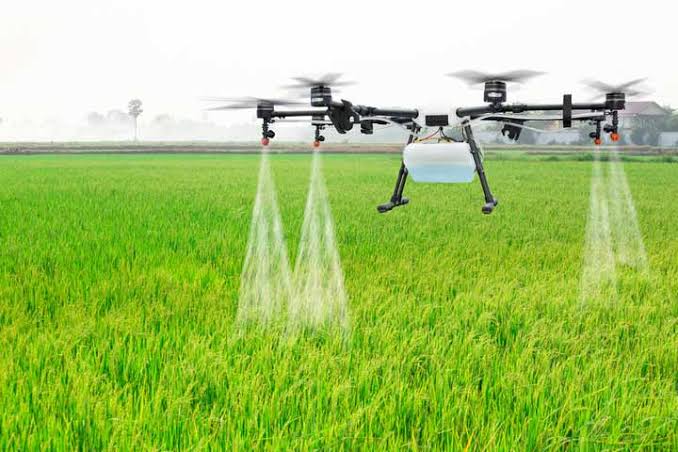How are drones being used in agriculture?

Drones have been used in agriculture, expanding over the past few years, as they can provide various benefits to farmers beyond just providing data. In this blog article, learn what drones are currently doing for farming and what other uses there might be for them!
10 Benefits of Using Drones in Agriculture
Using drones to seed crops is a great way to increase yields and reduce inputs.
- Here are ten benefits of using drones for agriculture: Drones can reach areas that other methods cannot.
- Drones can monitor crops from a distance, allowing farmers to make informed decisions about crop management.
- Drones can help farmers map their land in greater detail, allowing them to optimize the use of resources.
- Farmers can use drones to discover pests and diseases before they cause significant issues.
- Drones can facilitate GPS mapping and yield analysis of large areas quickly and easily.
- Crop insurance and yield predictions can both be made with drones.
- Drones can help reduce labor costs by automating tasks such as seeding or spraying.
- Drones can improve data collection on farms, making it easier for scientists to study agricultural trends.
- Drones can help you to collect data about crops and soil conditions.
- Drones can improve communication between farmers and their customers, making it easier for both parties to understand what is happening on the farm.
Overall, drones are used in agriculture to help farmers improve their crops and increase their yields. Their benefits include improved crop yield, reduced environmental damage, and more accurate spraying operations.
How are drones being used in agriculture?
The deployment of drones could increase crop production. Additionally, they are utilized to help plant seeds in places that are challenging or impossible to access using conventional methods.
Crop productivity can be increased quickly and effectively by using drone seeding. By using a drone, farmers can spread seeds over a place that would otherwise be too large or too difficult to sow. We refer to this as drone seeding.
Drones are used to seed crops in areas that would be difficult or impossible to reach by traditional means. They can fly over large areas, delivering the seed where needed.
In addition to ensuring that the crops are planted properly, this saves time and money. Drones are also used to scan the land for potential new crop plantings or to check for disease symptoms in crops.
The Value of Agriculture Technology
Agriculture technology has the potential to help solve the world’s food crisis. According to the United Nations Food and Agriculture Organization, 18 million acres or 7.3 million hectares of forests are lost yearly.
Deforestation on this massive scale has enormous effects globally, including reducing the availability of fresh water, contributing to climate change, and destroying vital habitats. However, agriculture technology has the potential to help solve these problems by helping to restore lost forests.
Smart farming, for example, can help lessen the requirement for land that is possibly resolved for logging by supporting farmers in growing more profitably and environmentally friendly crops. In addition, agricultural technologies can help us make healthier foods in a way that is more environmentally friendly.
Difference Between Farming and Crop Science
Drones are being employed more and more in agriculture to assist farmers in producing more. Drones can help farmers survey their crops and identify problems early on, saving them a lot of time and money. Additionally, insecticides and other agricultural items can be sprayed using drones.
There is a clear distinction between farming and crop science regarding drone usage. Aerial photography has been used in farming for centuries. Still, drones have recently become affordable and reliable enough for widespread use.
Farming is the cultivation of plants for their food content. In contrast, crop science studies plant biology and its relation to agriculture.
One of the first applications of drones in agriculture was mapping. Through aerial photography, farmers can assess their crops in detail and make corrections before any damage occurs.
Additionally, drones are a possibility for yield mapping, which enables farmers to spot regions that require extra care and catch pests or diseases in the early stages.
Drones are used to monitor crops remotely. Farmers can now operate remotely, saving money and time on travel. It eliminates the need for field workers to check on crops. By doing so, workforce turnover is decreased, and efficiency is increased.
In recent years, drones have also been used in precision agriculture. Precision agriculture involves using data gathered from various sensors on a drone to make decisions about how to grow crops.
Conclusion
Drones have been used in agriculture for many years, and the technology has only continued to evolve. They are an invaluable tool for farmers who want to take pictures or videos of their crops from a distance or who need to inspect a field quickly but don’t want to get on the ground.
Farmers can see problems that might not appear when standing on the floor with drones. They can also collect valuable data about the health and condition of their crops without having to worry about damaging them.



